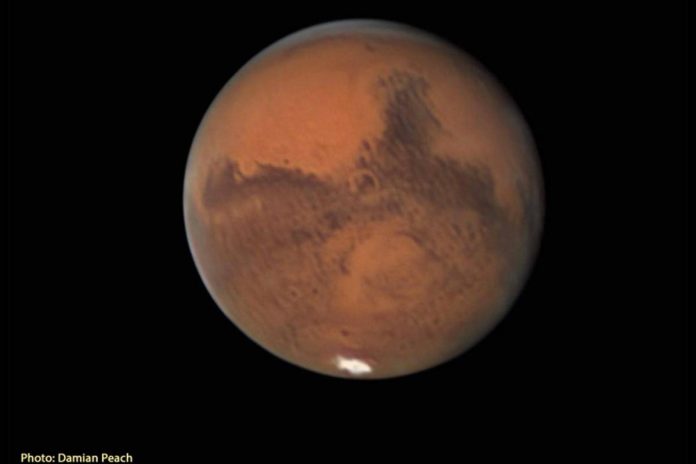With Mars at its brightest in 15 years and two full moons – October is a great month to look up.
Mallory Thorp, a PhD student in the department of astronomy and physics at the University of Victoria, explains that Mars is currently in opposition, which is a “fancy word” used for when the planets and the sun align.
“So the Earth is going to be in between the sun and Mars,” said Thorp.
Mars slides into opposition every two years – due to Earth’s position on its orbit this is as close as our planet will get to Mars in the next 15 years, making the red planet extremely bright and distinct.
“It’s a combination of opposition and our position within our own elliptical orbit,” she adds.
To locate Mars, Thorp suggests going out just after sunset and gazing northeast, which is the direction the sun and planets rise. As the night goes on, Mars – which will be bright orange – will move from east to west across the sky basically following the same path the sun makes during the day.
“It will really stand out from any other star,” she said. “I think if you even stood outside and put your head up and wiggled it around, your eyes would catch it.”
Mars will be closest to Earth until Oct. 13 and after that it, the red planet will get “dimmer and dimmer for 15 years” before it comes back around, although there are periods where Mars will get slightly brighter when in opposition.
Another notable but unrelated space event this month is a double full moon.
There are about 29.5 days in between each full moon, which means there’s usually only a chance for one full moon a month. However, if one occurs at the beginning of the month, there’s a chance a second one could take place before the month is over – which is exactly what happened in October with the first full moon taking place on Oct. 1 and the second occurring on Oct. 31.
“This is the time of year where we all get a little bit sad as the days get shorter and it starts to get dark early, but it’s a nice reminder that there’s lots of beautiful stuff that we don’t have to stay up late to see now,” said Clare Higgs, a fellow PhD student.
For the best stargazing experience, Higgs likes to go to the beach under Mount Douglas due to the lack of streetlights, while Thorp recommends Cadboro Bay, adding that being near open water is a great way to reduce light pollution.




























